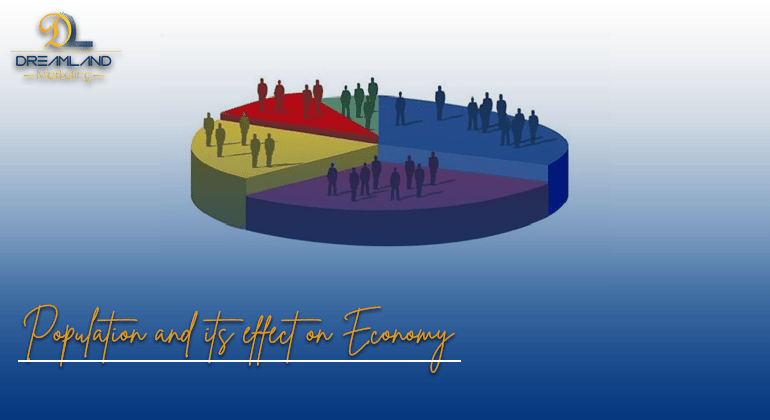Population and its effect on the Economy
The population is referred to as the inhabitants of a specific place. The population of any place has many effects on the economy. As the population increases, it can have both a positive and a negative impact on the economy. All that depends on how the related authorities control it. They can make the best out of it and make the economy thrive if they make the proper steps at the proper time but if they make even the slightest mistake, they can end up crashing the economy. It plays a major role as the bases of an economy relies on the pillar of population.
The current population of Islamabad is 1.5 Million and increasing as people from all over the country come to this capital to find work and make their everyday living to maintain a lifestyle for their loved ones. Now all these people need homes to stay an increase in demand for housing societies is observed and with the number of housing schemes increasing there’s a demand for everyday things thus an increase in commercial projects. This is good for the economy as small-scale businesses get more consumers and it is a win-win situation for both businesses and consumers.
“THE MORE PEOPLE YOU HAVE, THE MORE WORK IS DONE, AND THE MORE WORK IS DONE, THE MORE VALUE”
The relationship between population growth and economic growth is irrational and independent of each other. If population growth and per capita GDP growth were completely independent, higher population growth rates would lead to higher economic growth rates. It would still be true. Only the growth per capita GDA would give rise to improvements in economic well-being. On the other hand, if population growth affects per capita output growth, higher population growth rates would contribute to either higher or lower overall economic growth depending on the nature of its effect on growth per capita GDP
Economic growth is important for raising living standards around the world and the role of population growth in the evolution of living standards is a significant policy issue. In addition to the potential effects of population growth on economic inequality, population and economic growth have significant impacts on such controversial topics as international migration and global resource use. The relationships between population and economic growth analyzed are to assess the implications of their likely evolution for growing inequality around the world and population and migration policies. There is extensive literature on these relationships but little consensus on the actual effects of population on economic growth.
The quantity, quality, structure, distribution, and movement of a population can help or hinder the rate of economic development. A developed country with a low population density and a low percentage of employable people needs an increase in population in order to keep up with economic development. Developing economies like Pakistan suffer from various issues such as energy & water shortages, political instability, lack of policy implication, continuous increase in inflation, security concerns, the burden of foreign debt, and misbalance between import and export payments, etc.
In Pakistan majority of people rely upon agriculture and with the population increasing every day more and more people are finding agriculture a way to make their living, with the increasing numbers every day. Since the 1990’s Pakistan has faced an increase in the ratio of the working-age population known as the demographic dividend. The demographic dividend may lead to higher savings and investments, which spurs economic growth. This postulation is the first of its kind to analyze the impact of demographic variables on economic growth through physical capital for Pakistan from 1960 to 2014.
In this regard, the demographic change is captured by taking four alternate measures, namely population growth, young age dependency ratio, old-age dependency ratio, and working age population ratio. In order to examine the channel effect, first, the direct impact of demographic changes on physical capital is estimated. Later, the impact of demographically induced capital stock on economic growth is estimated. By using the FMOLS technique, this concludes that the total negative impact is highest in the case of old age dependency, which means that higher old-age dependency is the most threatening demographic change for economic growth. The least harmful demographic change is young age dependency. Moreover, the empirical findings highlight the importance of capital stock as the mediating channel in the demographic change and economic growth relationship. The least harmful demographic change is young age dependency. Moreover, the empirical findings highlight the importance of capital stock as the mediating channel in the demographic change and economic growth relationship. The study recommends effective long-term policies to increase youth employment and enhance savings for maximizing the benefits of demographic dividend.
“In a more or less vague form, it has occupied the attention of thoughtful men in all ages of the world.”



